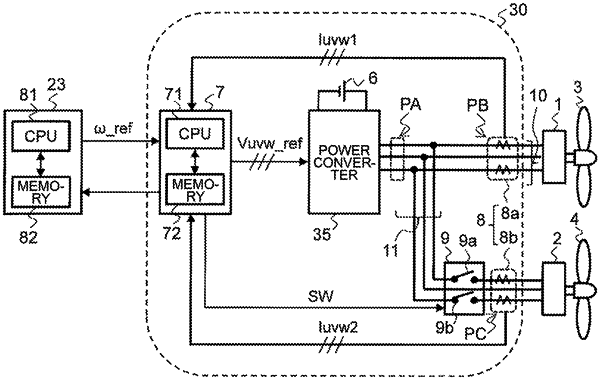| CPC H02P 29/0243 (2016.02) [H02P 27/08 (2013.01); H05K 7/20909 (2013.01)] | 7 Claims |

|
1. A motor control device comprising:
a power converter that converts a power into a three-phase voltage and supplies the three-phase voltage to two motors being connected in parallel;
a three-phase power line that connects between one of the two motors and the power converter;
a branch three-phase power line that is branched off from the three-phase power line and connects between the other of the two motors and the power converter;
a relay having two switches that are provided on power lines of two phases of the branch three-phase power line and switch between an on-state and an off-state, the on-state being a state in which the power line of the corresponding phase is electrically connected between the other motor and the power converter, the off-state being a state in which the power line thereof is disconnected;
a current transformer that detects three-phase currents flowing in the two motors; and
a controller that controls the power converter and the relay corresponding to a speed command value and information of a current detected by the current transformer,
the controller
performs a failure determination by identifying a phase of a power line in which no current flows in the three-phase power line and the branch three-phase power line to locate a failure position of the relay, and
when a failure is detected in one of the two switches in the failure determination, controls to change an on-state or off-state of the other switch, which operates normally, to coincide with a state of the failed switch.
|